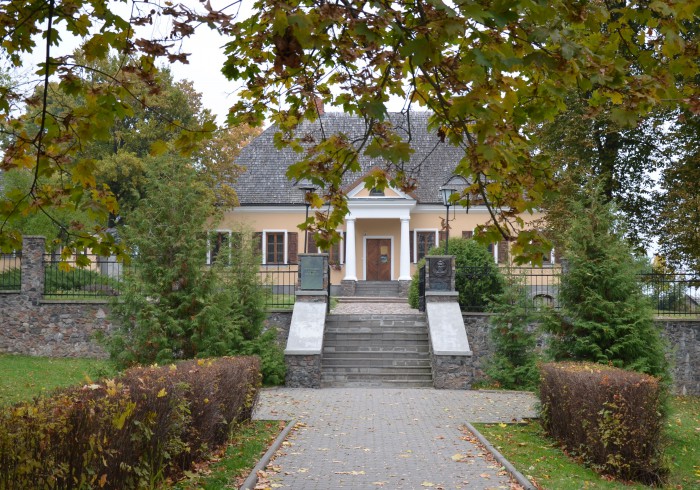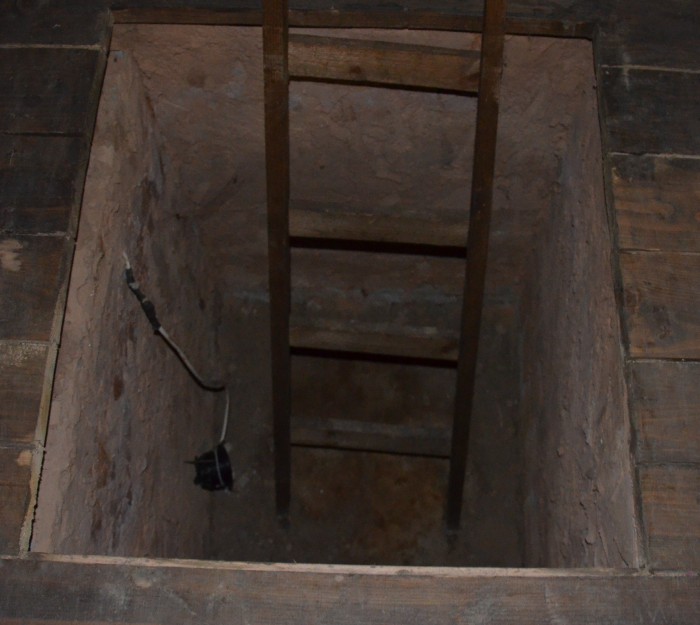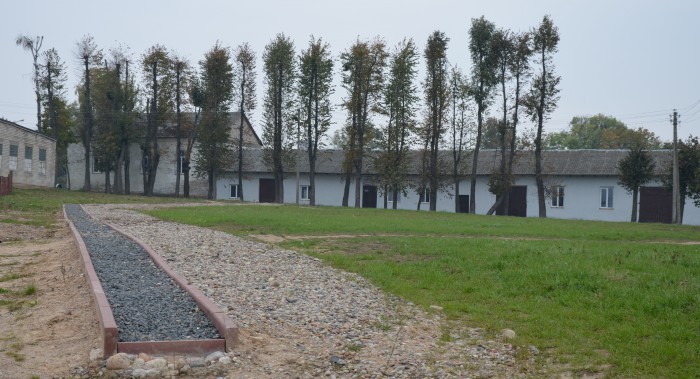26th October 2015
Tempus Fugit

I am now in the last three months of my posting to Belarus. The time has passed very quickly. I’m suddenly confronting the need to finish things or put them in order for my successor.
I’ve also realised that I haven’t done some things I wanted to do, or been to places that I wanted to visit. I’m already having regrets about this. I had wanted to write more blogs explaining Britain to Belarusian readers. But I’m running out of time, so I’ll write a final few reflecting on my time in Belarus before I return to Britain in January.
Last weekend I went to Novogrudok, one of the oldest settlements in Belarus. I had seen the pictures of the ruins of the castle, and decided I wanted to see them. In Britain, we have over 600 castles (though it depends on how you define a castle), but in Belarus there are relatively few.
Novogrudok castle lived up to my idea of what a castle should be. It is on the top of a large, high mound and has a great view over the countryside around. It has a deep moat around it, although it no longer holds much water – only a trickle in a small ditch. On the overcast October day I visited, there was a steady stream of visitors – mainly Belarusian school children, some of whom were only too happy to climb up the ruined tower.
The other remaining tower – apparently at one time there were as many as seven – has been reconstructed. I can’t say I liked the reconstruction, but that may be my British sensibility. We tend to like our ruins to be left – as ruins. Whether the castle was the stronghold of Mindaugas, the first Grand Duke of Lithuania, or Novogrudok the first capital of the Grand Duchy of Lithuania didn’t matter. The ruined tower looked suitably ancient.
If the town was ever the capital of the Grand Duchy, it was only very briefly. The emblem of the Grand Duchy, the Pahonia, a charging knight on a rearing horse, used to be that of the town, but is still common all over the region. Novogrudok, like much of western Belarus, was later in the Polish-Lithuanian Commonwealth, subsequently the Russian Empire, then in Poland between 1920 and 1939, and now Belarus. So it reflects Belarus’ complicated history, and position between Europe and Russia.
Novogrudok is also the birthplace of Adam Mickiewicz (1798-1855), the romantic poet, who wrote in Polish. He was obviously attached to his homeland, but as that first line of his epic poem Pan Tadeusz states, that homeland wasn’t “Poland” but “Lithuania”:
Litwo! Ojczyzno moja! ty jesteś jak zdrowie;
Ile cię trzeba cenić, ten tylko się dowie, Kto cię stracił.
(Lithuania my homeland! You are like health
How much you are valued is only known when you are lost)
Mickiewicz is today the national poet of Poland, but he lived his life when there was no Polish state, and spent much of it in exile in Paris and Rome, and died in Istanbul. His ethnic origins are unclear, but he was against a mono-ethnic state and dividing up ethnic groups into separate entities. He was from an age that didn’t have the same sense of nation as we have today.
He is not well known in Britain, but he should be. His inclusive view of how people and communities should live together, or what we might call multiculturalism, is particularly striking. So I enjoyed visiting the museum that was once his home, and seeing the memorial next to the castle, and hearing about his restless life and exploits.
Novogrudok’s multi-ethnicity was shattered in the 20th century, and the last place I visited in the town bears testimony to some of the awful events: the museum devoted to the Jewish community.
The invading Germans treated the Jewish community of Novogrudok much as elsewhere in Poland and the Soviet Union. They rounded up and either killed them or forced them into slave labour. There were Jews who resisted and fled into the forests of Belarus and formed partisan groups, the most famous of which were those led by the Bielski brothers in the Naliboki forest, not so far away from Novogrudok.
The Jews who found themselves imprisoned in Novogrudok refused to bow down to the fate of so many of their kin. They dug a tunnel 180 metres from the inside of their hut into a nearby rye field. It took them nearly four months in 1943 with basic implements and living on a meagre diet. The dimensions of the tunnel were about 50cm wide and tall.
The hut was reconstructed and opened as the Museum of Jewish Resistance. A trace of the tunnel is sketched out by a path in the grounds. Its construction was an extraordinary feat in the face of terrible conditions. Nearly all the remaining Jews escaped through it. After their escape, the Nazis hunted them, but some got away to join the Bielski partisans, including one boy who later moved to Britain, and whose experiences have been recorded by the Holocaust Educational Trust.
Seeing the museum was as sobering experience as I expected. It showed the cramped conditions and the lack of water and heating. Given the lack of food, the dirty conditions and prevalence of lice, I doubt I would have survived long. I can’t imagine being so desperate as to have crawled 180 metres through such a tiny space.
The museum recorded the names and photographs of some of the people imprisoned there, as well as the Bielski partisans. My guide told me their stories. Nearly all survivors left the country to start new lives elsewhere.
The past can imprison us. But we have to remember it, so that we don’t repeat the mistakes or terrible crimes. The survival of the Jews of Novogrudok is a great example of the spirit of resilience of humans. But life should be for living, not just surviving.




Thank you Bruce. My father helped to build that tunnel. After escaping, he was one of the few who made it to the Bielski partisan group. There is a particular photo of about 28 of those partisans that somehow made it through the war intact, and is now often used as a visual representation of the Jewish “Resistance,” including at the end of the movie “Defiance.” My father was one of those in the photo, and I’ve unexpectedly happened upon it in several places around the world, most recently in the little Jewish museum in Athens. He is still alive, I’ll visit him next week in Hartford.
Thank you for your comments. I have since left Belarus. Please pass on my best wishes to your father.
Thanks Bruce, I shall miss these, like this one they remind me of the few places I haven’t visited in Belarus, so when I next have the time I will also make the visit, I enjoyed reading your piece in spite of the sad part which as you say we should never forget. Peter.
I haven’t left yet!